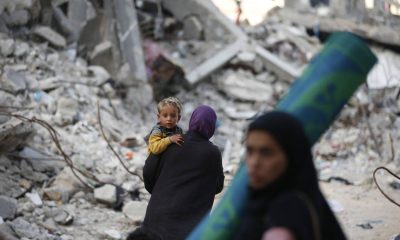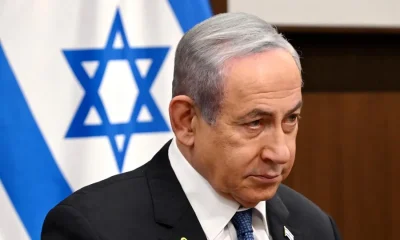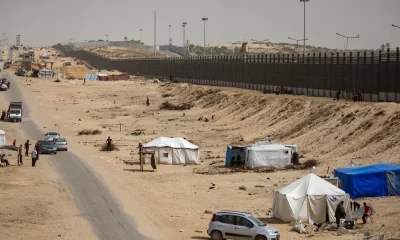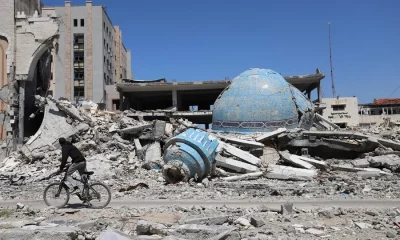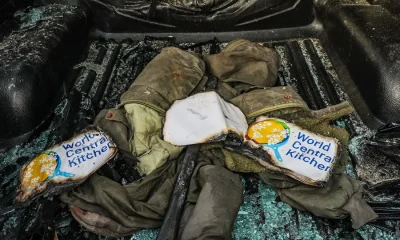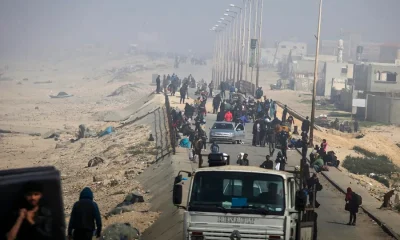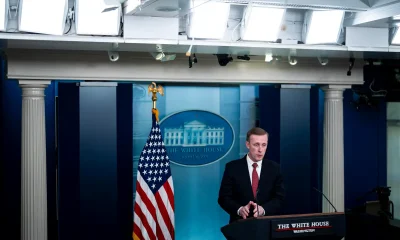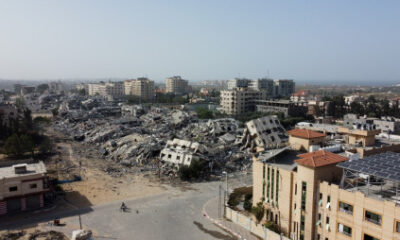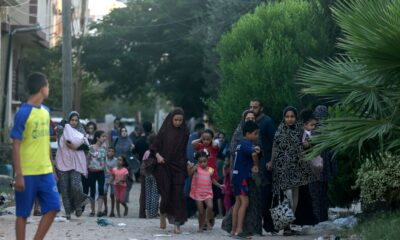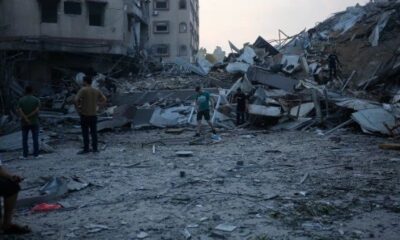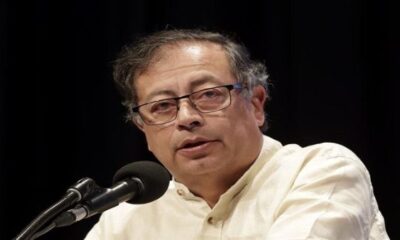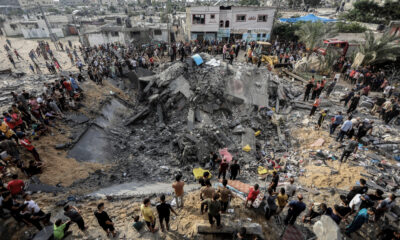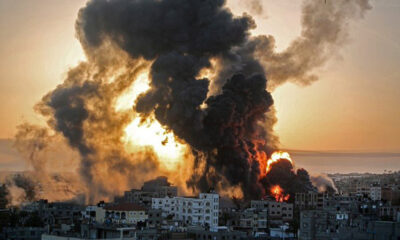International
Hamas asks to investigate Israel’s abuses and torture of Palestinians imprisoned in Gaza
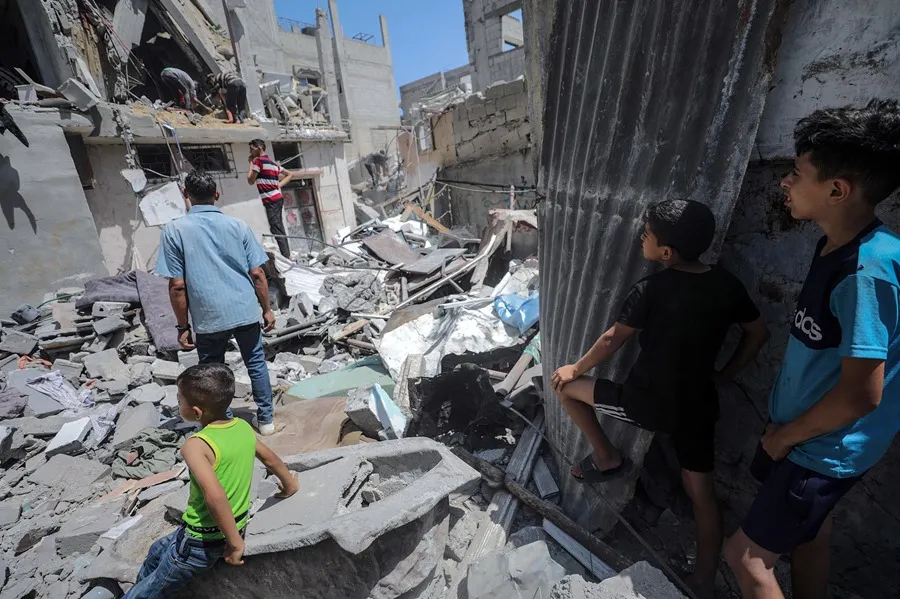
The Islamist group Hamas has called on the international community, and especially the International Committee of the Red Cross, to investigate cases of abuse and torture in Israeli detention centers against detained Gazans, as denounced by pro-human rights groups.
“The horrible testimonies about the conditions of the Palestinian detainees in the Zionist prisons continue, the last of which was that of several Palestinians kidnapped in Gaza and released today from the Zionist military prison ‘Sde Teman’,” Hamas said in a statement last night.
“Human rights institutions, in particular the International Committee of the Red Cross, must work to follow up on the conditions of the Palestinian arrested in these fascist detentions and put an end to the serious violations to which they are exposed,” he added.
His words come hours after a young Palestinian, allegedly released from Sde Teman, where he was detained for a month by Israel, was recorded yesterday in a hospital in a state of shock, barely unable to speak coherently and with signs of torture on his wrists and ankles.
On March 7, the Israeli media Haaretz denounced that at least 27 people detained in the Gaza Strip and placed in Israeli military custody had died since the beginning of the war on October 7, either at the Sde Teiman military base, the Anatot detention camp or during interrogations.
Already in December, Haaretz revealed that those arrested in Sde Teiman could remain handcuffed and blindfolded for whole days, and an internal source assured that soldiers tended to mistreat prisoners, which coincides with the testimonies of other freed Palestinians
Meanwhile, the Israeli Army intensified its attacks and incursions in the heart of the city of Rafah, south of Gaza, on Friday, with the destruction of residential neighborhoods and hand-to-hand fighting with Hamas militiamen.
As Palestinian sources confirmed to EFE, the attacks are now concentrated in Al Auda, in the center of the city of Rafah, and in Tal al Sultan, a neighborhood in the northwest.
“The whole city of Rafah is an area of Israeli military operations,” Ahmed al Sofi, mayor of Rafah, said today in a statement released by Hamas on Telegram. “The city is experiencing a humanitarian catastrophe and people are dying inside its tents due to the Israeli bombings.”
According to the mayor, there is no medical center left in operation in the city and the residents and displaced people – according to UNRWA about 65,000 people, of the 1.4 million Gazans that the city was homed before the offensive – cannot cover their daily needs for food and water.
The third point of intense military activity, as local sources reported to EFE, is still the so-called Philadelphia corridor, the border line with Egypt that Israel aspires to control, according to military sources, in order to cut the network of tunnels that supplies Hamas helps it both to rearm and attack.
Since this morning, at least 22 people have died in the Strip, according to medical sources, including five municipal workers, including the head of the emergency service, denounced the city council of Rafah.
Fatal attacks were also recorded in Zeitun, in the northern city of Gaza, which caused at least eight deaths, and in the central areas of Nuseirat and Deir el Balah, according to the Palestinian agency Wafa.
In the north, the lack of food and food is still a critical issue. According to UN data, of the 61 coordinated humanitarian assistance missions north of Gaza, only 28 – 46% – were facilitated by the Israeli authorities.
The reality in the enclave is that only a tiny minority can eat on a regular basis, in the absence of food or affordable prices. Many do it once a day and there is a lack of milk and porridge, denounce organizations on the ground.
The NGO Doctors Without Borders warned today of the psychological trauma that the war is causing to the children of Gaza, who are losing the desire to continue living surrounded by so much death.
“What we are seeing in young children, especially, are symptoms of depression because they have lost everything. They have lost their parents, their siblings, their home, their toys, everything that made their daily life normal,” the organization said in a statement.
International
Rubio rules out 2028 presidential bid if Vance runs
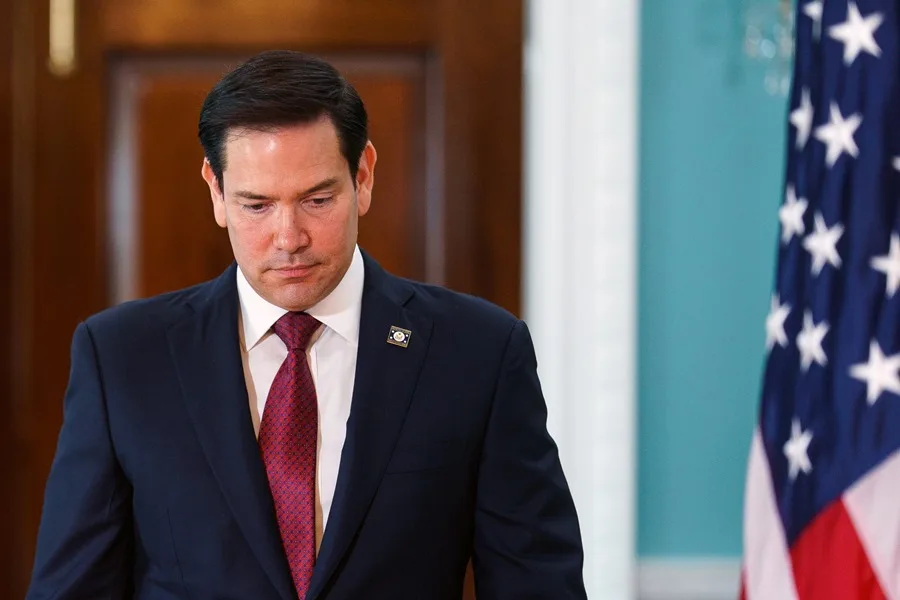
U.S. Secretary of State Marco Rubio said he would not seek the presidency in 2028 if current Vice President JD Vancedecides to run as the Republican nominee to succeed President Donald Trump.
“If JD Vance runs for president, he will be our candidate, and I will be one of the first people to support him,” Rubio said in an interview with Vanity Fair, in which he appeared alongside other senior members of the presidential cabinet.
Rubio, 54, and Vance, 41, are widely viewed as two of the leading Republican figures who could headline the party’s ticket in the 2028 election. Under the U.S. Constitution, Trump is barred from seeking another term after completing two presidential mandates.
In a lighthearted moment during the interview, Vance jokingly offered photographers $1,000 if they managed to make him look better than Rubio in the photos. Both leaders have received public backing from Trump, who last October floated the idea of a joint ticket featuring Rubio and Vance, without clarifying who would lead it.
“I think that if they ever teamed up, they would be unstoppable. I don’t think anyone would run against us,” Trump said at the time.
White House Chief of Staff Susie Wiles, who also took part in the interview, confirmed that Trump does not intend to violate the 22nd Amendment, which prohibits a third presidential term, though she acknowledged that the president is “having fun” with speculation about a possible return to office.
Rubio, the son of Cuban immigrants, served as a Republican senator from 2010 to 2025. He sought the party’s presidential nomination in 2016 but was defeated by Trump after a bruising primary contest. His name was floated as a potential vice presidential pick in 2024, but Vance ultimately secured the spot. After taking office, Trump appointed Rubio as secretary of state, making him the first Latino to hold the position.
International
Authorities search for armed and dangerous suspect in fatal Brown University attack
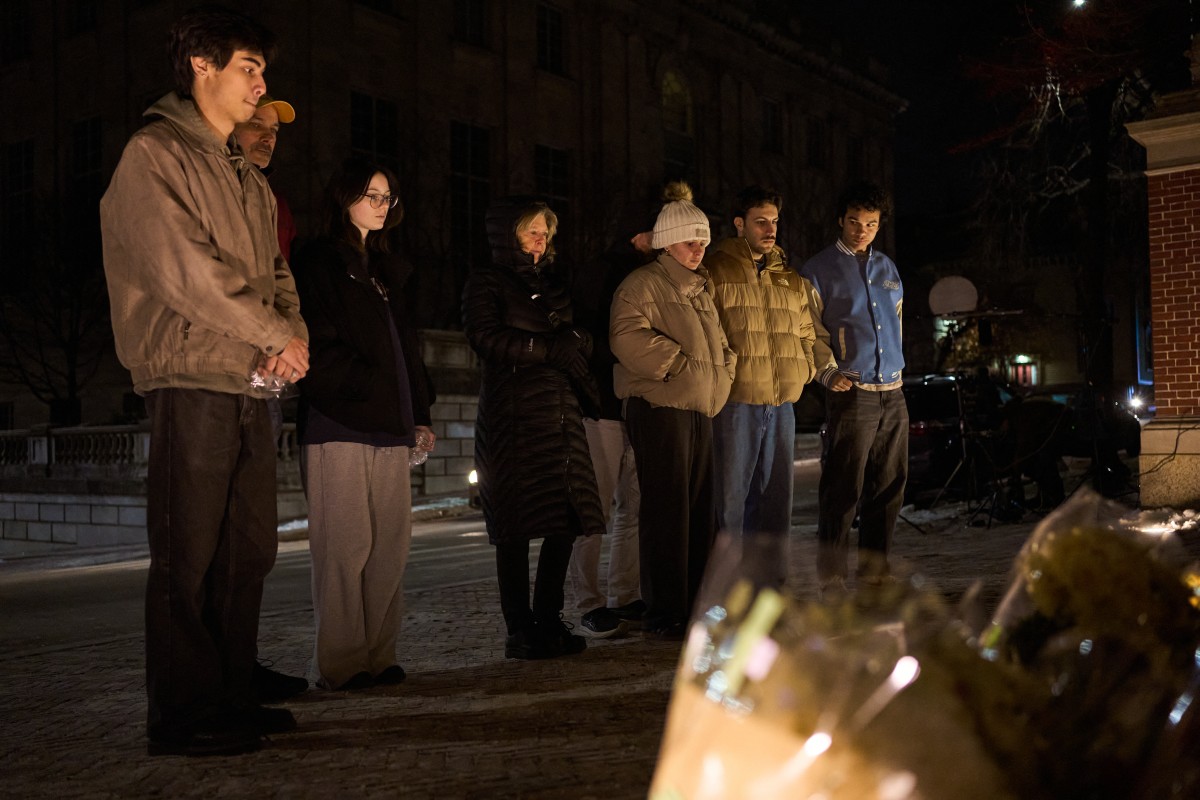
According to the statement, investigators are “seeking the public’s help to identify and speak with an individual” who was seen “near” the suspect at the time of the attack.
The Providence Police Department in Rhode Island released three photos of the person of interest, whose face has been blurred. In the images, the individual is wearing navy blue clothing, what appears to be a green hood, and carrying a light-colored backpack.
Earlier, authorities had released several photos and videos of a suspect described as “approximately 5 feet 8 inches tall, with a stocky build,” dressed in dark clothing, with their face covered by a surgical mask and wearing a beanie. The suspect’s identity remains unknown.
Authorities are offering a $50,000 reward for any information leading to the identification, arrest, and conviction of the person responsible for the killings, who is considered armed and dangerous.
The gunman opened fire on Saturday at Brown University’s engineering and physics building, where exams were being held, killing students Ella Cook and Mukhammad Aziz Umurzokov. The names of the nine people injured have not been released.
International
Police investigate deaths of Rob Reiner and wife as apparent homicide

The Los Angeles Police Department (LAPD) is investigating the deaths of Hollywood actor and filmmaker Rob Reinerand his wife as an “apparent homicide,” amid a wave of tributes to the director of classics such as When Harry Met Sally.
According to U.S. media reports on Sunday, Rob Reiner and Michele Singer Reiner were found dead at their Los Angeles mansion with what appeared to be stab wounds.
Several political figures shared messages of condolence following the reported deaths of the director of A Few Good Menand his wife.
While the LAPD did not officially confirm the identities of the victims, it stated that homicide detectives were dispatched to the Reiner residence.
“At this time, no additional details are available and the investigation into an apparent homicide is ongoing,” the Los Angeles Police Department said in a statement posted on social media.
LAPD Deputy Chief Alan Hamilton told reporters that no arrests have been made and that no individuals are currently being questioned as suspects.
“I’m not going to confirm whether anyone is being questioned at this moment or not. We are going to try to speak with as many family members as we can,” Hamilton said.
CNN reported that a family spokesperson confirmed the deaths of Reiner and his wife.
California Governor Gavin Newsom, former U.S. President Barack Obama, and former Vice President Kamala Harrisissued statements expressing their condolences.
-

 Central America3 days ago
Central America3 days agoPanama seizes over three tons of drugs hidden in Caribbean port container
-

 International2 days ago
International2 days agoPolice investigate deaths of Rob Reiner and wife as apparent homicide
-

 International4 days ago
International4 days agoSeveral people shot in attack on Brown University campus
-

 Central America2 days ago
Central America2 days agoOAS urges swift recount in Honduras as election results remain uncertain
-
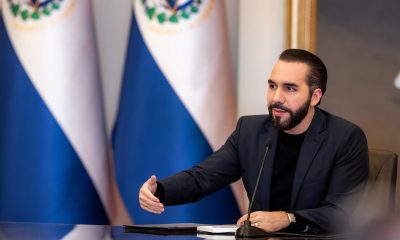
 Central America1 day ago
Central America1 day agoBukele says AI partnership with xAI will transform public education in El Salvador
-
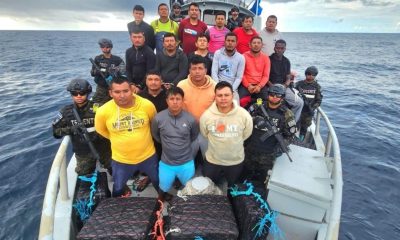
 Central America1 day ago
Central America1 day agoEl Salvador ranks among top countries in the Americas in fight against organized crime
-

 International4 days ago
International4 days agoU.S. and Mexico Reach Deal to Address Water Deficit Under 1944 Treaty
-
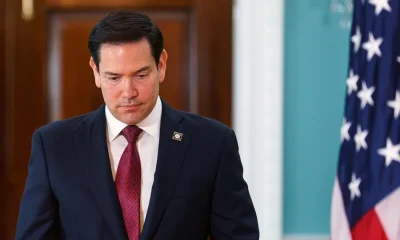
 International6 hours ago
International6 hours agoRubio rules out 2028 presidential bid if Vance runs
-

 Central America6 hours ago
Central America6 hours agoArrests and clashes in Tegucigalpa as vote count continues after Honduras election
-
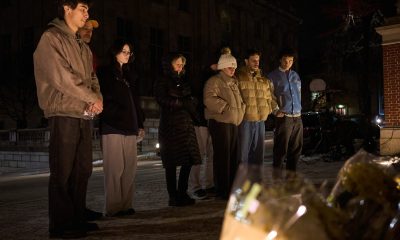
 International6 hours ago
International6 hours agoAuthorities search for armed and dangerous suspect in fatal Brown University attack

























